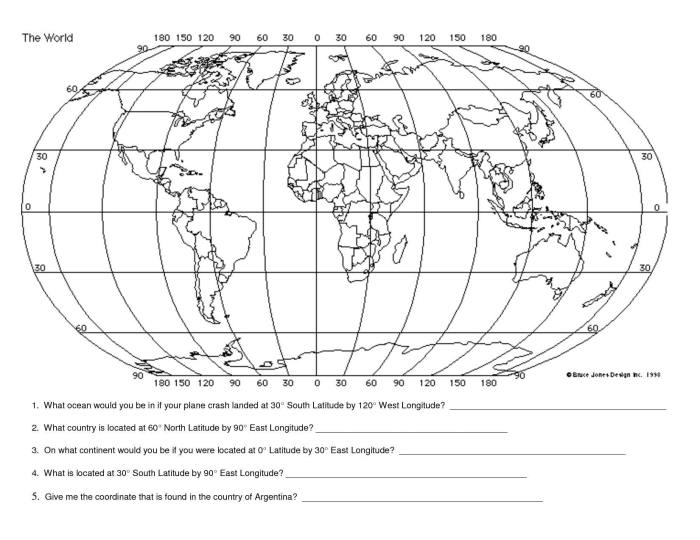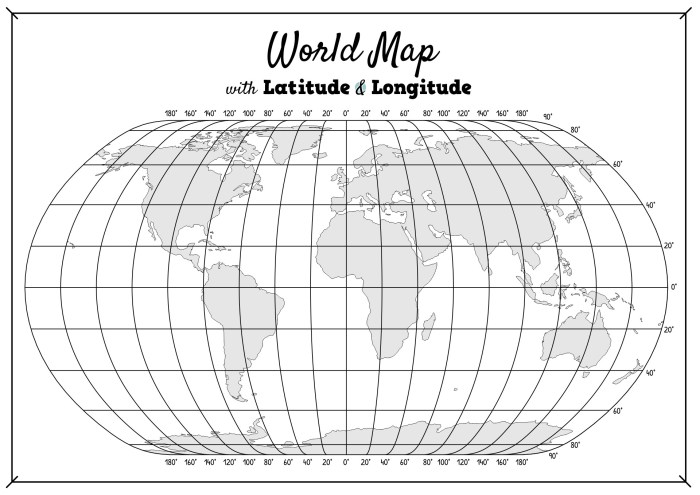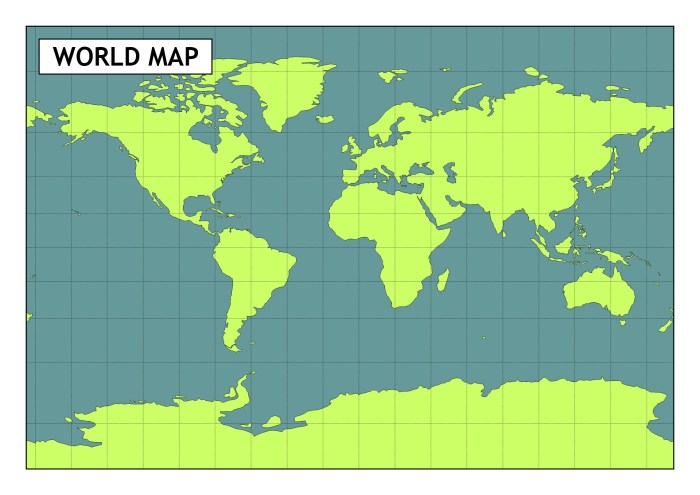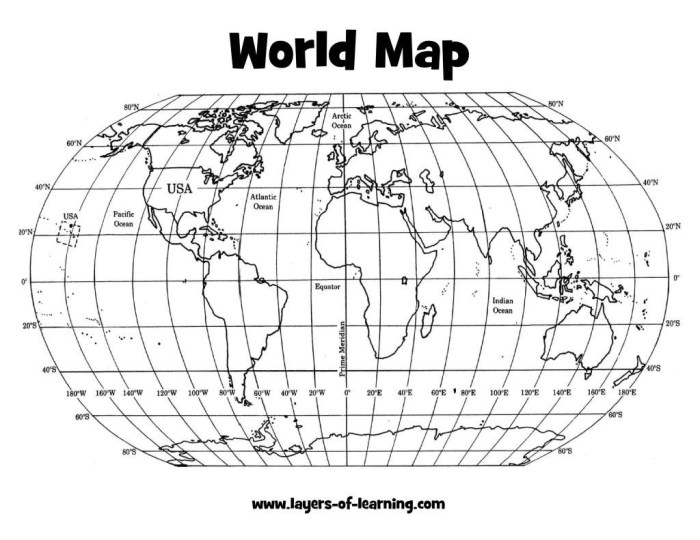Embark on an educational journey with our comprehensive lines of longitude and latitude worksheet, meticulously designed to unravel the complexities of Earth’s coordinate system. Delve into the world of geography as we explore the concepts, types, and applications of these fundamental lines that shape our understanding of the globe.
Lines of longitude and latitude, the backbone of cartography, provide a precise framework for locating and navigating the Earth’s surface. This worksheet serves as an invaluable resource for students, educators, and anyone seeking to grasp the intricacies of this fascinating subject.
Lines of Longitude and Latitude: Lines Of Longitude And Latitude Worksheet

Lines of longitude and latitude are imaginary lines that form a grid system on the Earth’s surface, providing a framework for locating and describing geographic features. These lines play a crucial role in navigation, cartography, and various scientific disciplines.
Definition of Lines of Longitude and Latitude
Lines of longitude, also known as meridians, run vertically from the North Pole to the South Pole. They measure the angular distance east or west of the Prime Meridian, which passes through Greenwich, England.
Lines of latitude, or parallels, run horizontally around the Earth, parallel to the equator. They measure the angular distance north or south of the equator.
Types of Lines of Longitude and Latitude, Lines of longitude and latitude worksheet
Types of Lines of Longitude:
- Prime Meridian:The reference meridian at 0 degrees longitude.
- International Date Line:A line of longitude at 180 degrees east or west of the Prime Meridian, where the date changes by one day.
Types of Lines of Latitude:
- Equator:The line of latitude at 0 degrees latitude, dividing the Earth into the Northern and Southern Hemispheres.
- Tropic of Cancer:The line of latitude at 23.5 degrees north of the equator, marking the northern boundary of the tropics.
- Tropic of Capricorn:The line of latitude at 23.5 degrees south of the equator, marking the southern boundary of the tropics.
- Arctic Circle:The line of latitude at 66.5 degrees north of the equator, marking the southern boundary of the Arctic Circle.
- Antarctic Circle:The line of latitude at 66.5 degrees south of the equator, marking the northern boundary of the Antarctic Circle.
Relationship between Lines of Longitude and Latitude
Lines of longitude and latitude intersect at right angles, forming a grid system that covers the entire Earth. The intersection points of these lines are known as coordinates, which specify the precise location of a point on the globe.
Applications of Lines of Longitude and Latitude
Lines of longitude and latitude have numerous applications in various fields:
- Navigation:Determining the location of ships, aircraft, and other vehicles.
- Cartography:Creating maps and charts that represent the Earth’s surface.
- Timekeeping:Determining the time difference between different locations based on their longitude.
- Climate and weather patterns:Studying and predicting weather patterns based on latitude and longitude.
Questions and Answers
What is the difference between lines of longitude and latitude?
Lines of longitude run vertically from the North Pole to the South Pole, measuring east-west positions. Lines of latitude run horizontally, measuring north-south positions.
How are lines of longitude and latitude used in navigation?
Lines of longitude and latitude form a grid system that allows for precise location identification. Sailors and pilots use these lines to determine their position and course.
What are the applications of lines of longitude and latitude in cartography?
Lines of longitude and latitude provide the framework for creating maps and globes, enabling accurate representation of Earth’s features and locations.


